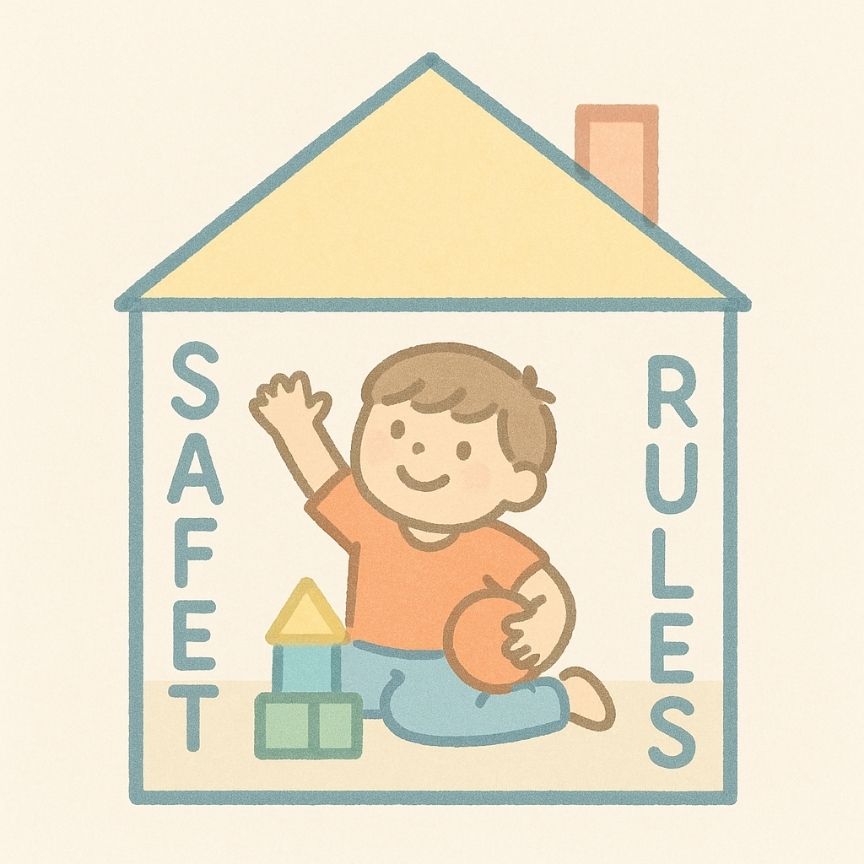Introduction
Parenting a four-year-old can feel like steering a tiny boat through alternating gusts of exuberance and sudden squalls. One minute your preschooler is building block towers with angelic focus; the next, they’re defiantly pushing the tower across the room because “I want a castle, not a house!” At this age, children are wired to explore power and autonomy, so boundary testing is not mischief—it’s developmental homework. The challenge for caregivers is to remain both loving and firm, offering clear guidance without stamping out that budding independence. This article walks you through practical, research-informed strategies to set limits that support healthy growth: understanding typical four-year-old behavior, crafting consistent boundaries, communicating with calm authority, applying positive reinforcement and fair consequences, and navigating emotional storms.
Understanding Your 4-Year-Old’s Behavior
Four-year-olds are fascinating contradictions. Their language blossoms, allowing elaborate stories and pleas (“Just five more minutes, pleeease!”), yet their emotional control lags behind their vocabulary. Three hallmarks dominate:
- Assertiveness: Preschoolers discover “I can!” and test how far that power extends. Grabbing a marker and drawing on the wall isn’t spite; it’s an experiment in agency.
- Limit Testing: Rules are probed for consistency. If bedtime slid later yesterday, today they’ll push harder, gathering data on whether boundaries are negotiable.
- Emotional Swings: Excitement can turn to frustration in seconds, often triggered by fatigue, hunger, or transitions they don’t yet manage gracefully.
It’s vital to distinguish true misbehavior—actions that knowingly break established rules—from developmentally normal trial-and-error. Standing on a chair to reach cookies after being told “wait until snack time” is misbehavior. Instead, shouting “No!” on the playground when another child wants a turn might just signal burgeoning social skills and an unrefined sense of sharing.
When you read behaviors through a developmental lens, you’ll respond with guidance rather than anger, making firmness feel like safety instead of punishment.

The Power of Consistent Boundaries
Clear, unwavering rules anchor a preschooler’s swirling impulses. Imagine boundaries as the walls of a bounce house: firm enough to keep the child safe, soft enough to let them leap confidently inside.
- Craft age-appropriate rules: Four-year-olds thrive on simplicity: “Inside voices,” “Gentle hands,” “Toys stay on the table.” Instead of lengthy explanations, choose short, affirmative statements.
- Consistency builds security: When a boundary is sometimes rigid and sometimes elastic, children feel compelled to keep testing. If jumping on the couch earns a warning today but laughter tomorrow, the behavior becomes a slot machine: pull the lever and see what happens. Align caregivers, grandparents, and babysitters on core rules to prevent mixed messages.
Boundary-setting language that works:
- “The tablet goes off after one show.”
- “Feet stay on the floor when we eat.”
- “We use markers only on paper.”
State rules calmly, then follow through every time. Consistency, far from being harsh, communicates, “I care enough to keep you safe and teach you.”

Using Calm, Assertive Communication
Volume does not equal authority. A calm voice, confident posture, and steady eye contact send a stronger message than shouting. Preschoolers are expert emotional mirrors: your tension fuels theirs, your calm steadies them.
Tone and Body Language: Kneel or crouch to your child’s eye level, shoulders relaxed. Speak in a firm, even cadence. A literal whisper can sometimes command more attention than a yell because it creates curiosity and signals control.
Simple, firm phrases:
- “I said no. That means we’re done.”
- “It’s time to stop and clean up.”
- “You may feel mad, but you may not hit.”
Avoid rhetorical questions disguised as commands (“Would you like to put on your shoes now?”) when you actually need compliance. Offer limited choices instead: “Shoes first, then you can choose red or blue socks.”
Model calmness: If frustration bubbles, pause—breathe slowly in through the nose, out through the mouth. Narrate your regulation aloud: “I’m taking a breath so I can speak kindly.” You’re teaching emotional self-management by example.

Positive Reinforcement and Consequences
Children repeat what earns attention. Pour attention on desirable behavior and watch it flourish.
- Praise strategically: Instead of generalized “Good job,” spotlight specifics: “You waited for your turn on the slide. That was patient!” This ties praise to actions, not identity, encouraging repeat performances.
- Logical, age-appropriate consequences: If a toy is thrown after a warning, it rests on a high shelf for the afternoon. If water is splashed outside the tub, bath time ends early. Consequences feel fair when they relate directly to the misstep.
- Follow through—every time: Empty threats (“If you scream, we’re never going to the playground again”) erode trust and teach children to ignore warnings. Choose consequences you can live with and apply them consistently.
- Avoid anger-based punishment: Time-outs and toy removals are tools, not emotional venting. Deliver consequences in a neutral tone: “You hit, so play stops for two minutes. When the timer rings, we’ll try again.”
Balance correction with positive reinforcement; for every boundary you enforce, catch two moments of cooperation and acknowledge them. This keeps the disciplinary environment nurturing, not punitive.

Handling Pushback and Emotional Outbursts
Pushback is not a sign your strategy failed; it’s evidence your child is learning where rails run. Tantrums peak between ages two and four, then gradually wane as language and self-regulation mature. Meanwhile, you need a toolkit.
- Validate feelings, label emotions: Start with empathy: “I hear you. You’re angry because the game is over.” Naming emotions helps a child feel seen and builds emotional vocabulary.
- Stay close, offer comfort, but keep the limit: If your child collapses shouting, “No bedtime!” sit nearby. Say, “Bedtime is still now. I’ll wait until you’re ready for a hug.” Your presence says love; the unchanged rule says firmness.
Teach self-regulation skills:
- Breathing Buddies: Have the child rest a stuffed animal on their belly and watch it rise and fall five times.
- Shake and Settle: Allow a quick shake-out of arms, then freeze like a statue.
- Calm-down Corner: A cozy corner with pillows and picture books where they can choose to regroup.
Co-regulate first: Preschool brains still borrow calm from adult nervous systems. Offer a hand to squeeze, count together to ten, or breathe in unison. Over time, transition from co-regulation to independent use of strategies.
Remember: A tantrum is a storm. Your job is to be the lightning rod—grounded, present, unscathed—and the lighthouse—showing a safe path back.

Conclusion
Being firm with a four-year-old is not about wielding power—it’s about demonstrating loving leadership. Clear rules, delivered calmly and enforced consistently, assure your child that the world is predictable and safe. Patience and repetition are your allies; every limit you uphold today lays a brick in tomorrow’s foundation of self-discipline and respect. When boundaries are paired with empathy, preschoolers learn that strong emotions are acceptable, but harmful actions are not. Hold steady, breathe deeply, and remember: your calm firmness now is the compass by which your child will navigate their expanding world.






